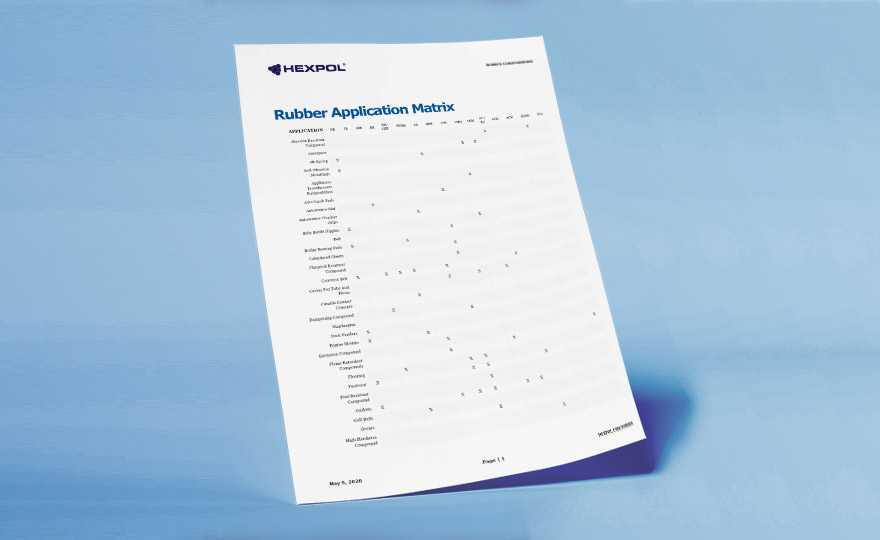What Is AU/EU Rubber ?
Millable Polyurethane Rubber can be processed with typical rubber processing equipment although it exhibits the properties of polyurethane (TPU and cast). Tipically, curing can be performedwith sulfur or peroxide; some special grades exploit isocyanate-based curatives. Polyurethane Rubber is produced with a stoichiometric deficiency of di-isocyanate compared to TPU where the di-isocynate is slightly in excess. This specific feature enables to benefit from the advantages of polyurethane elastomers with conventional equipment. In addition, extra properties can be achieved by adding fillers, additives and blending with other polymers. Polyurethane consists of a polyol (e.g.: polytetramethylene ether glycol [EU] or polyesteradpates [AU], a diisocyanate (normally MDI or TDI) and a chain extender (e.g.: ethylene glycol, 1,4-butandiol). The chemical composition of polyurethanes largely determines its range of properties and is thus of vital significance. The poylurethanes based on polytetrametylene glycol provides excellent hydrolysis resistance; ethylene glycol adipate provides excellent oil&fuel resistance, but poor hydrolysis resistance; butandiol gives excellent low temperature properties; Hexanediol adipates imparts hydrolysis resistance and heat resistance. Cyclohexanedimethanol affords very low gas permeation.

what is AU/EU Rubber Typically used For
- Membranes for shock absorbers
- Rubber Roll Coverings
- Belts
- Forklift Tires
- Matrices for ceramic tiles
- Gaskets
What are the KEY Properties of AU/EU
- Outstanding abrasion resistance
- Excellent Dry Traction
- Poor Wet Traction
- Excellent Bonding to Metal
- Very High Mechanical strength
- High elongation at breakHigh Elasticity
- Excellent dynamic mechanical properties
- Resistance against oils and fuels (AU)
- Poor Solvent Resistance (EU)
- Ozone Resistance
- Very low gas permeability
- Heat Resistance up to 120°C
- Shore-D range (Isocyanate curing)
Rubber Application Matrix
HEXPOL’s rubber compounds can be used in a variety of different applications. Download our Application Matrix to see which compounds can fit your application.


Typical advanced rubber compounding materials
Contact our global experts
To learn more about how we can make a material difference in your business, contact our skilled staff representatives for more detailed information.


